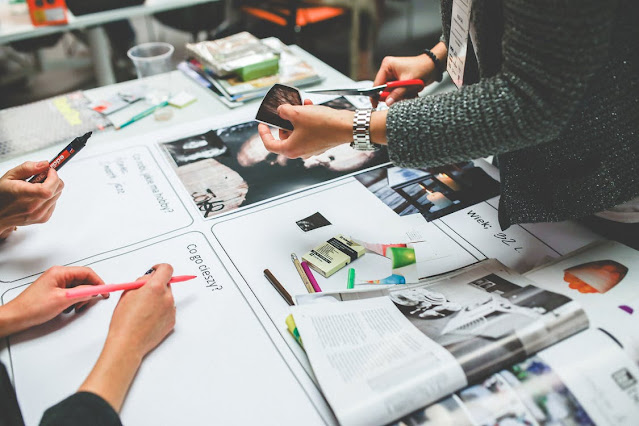Design thinking is indeed a non-linear, continuous approach, allowing teams to better grasp their clients, challenge assumptions, reframe difficulties, and prototype and test solutions. Empathize; Define, Ideate, Prototype, and Test are the phases that are most efficient for coping with ill-defined or uncertain challenges.
Because of its qualities, the design thinking method is especially effective if one has a hard, ill-defined situation that requires to be re-framed in a human-centric manner. In the design thinking process, stages overlap and are not always sequential. This methodology can be employed when teams need to stimulate innovation and collaboration while staying focused on user needs.
Let’s explore the Stages in design thinking and try to understand the importance.
Empathize—investigate the needs of the users
User research is often used to obtain a sympathetic grasp of the problem you're trying to solve. Empathy is vital in a design approach that is human-centered like design thinking as it helps one to put one's view of the world aside and obtain significant insight into users and their requirements.
Define—State the needs and issues of the users
Let’s start compiling the data acquired in the Empathize stage. The next step is to evaluate and synthesize one’s observations for defining the core issues they have discovered. These are defined as problem statements. Before proceeding to ideation, one can construct personas to assist maintain their efforts human-centered.
Ideate—Challenge Assumptions and Come Up with New Concepts
It's now time to start brainstorming. Because of the firm base of information gained in the prior two phases, one can start "thinking outside the box," look for different approaches to the situation, and identify new remedies to the issue statement. Brainstorming is especially effective in this situation. contact the best web application development company and get further info and the best solution.
Prototype—Begin Creating Solutions
This is considered a trial period. The objective is to find the best solution for each issue encountered. To study the ideas created, one should create some low-cost, scaled-down imitations of the product or certain characteristics identified within the product. This might be as easy as prototyping on paper.
Verify the solutions by putting them to the test
The prototypes are thoroughly tested by evaluators. Although it is the completion of the process, design thinking is continual: teams use the results frequently to reframe one or multiple problems. As a consequence, one is capable of going back to previous phases for making more iterations, alterations, and refinements – or to rule out alternate alternatives.
It is time to implement
The solution is eventually realized, launched, and tested in the actual world at this point. Several designs will never see the light of day. While the design is stages of design thinking lovely, it may not have met the users' expectations in the way that was hoped. Returning to the brainstorming stage and rethinking your concept is another option.












No comments:
Post a Comment